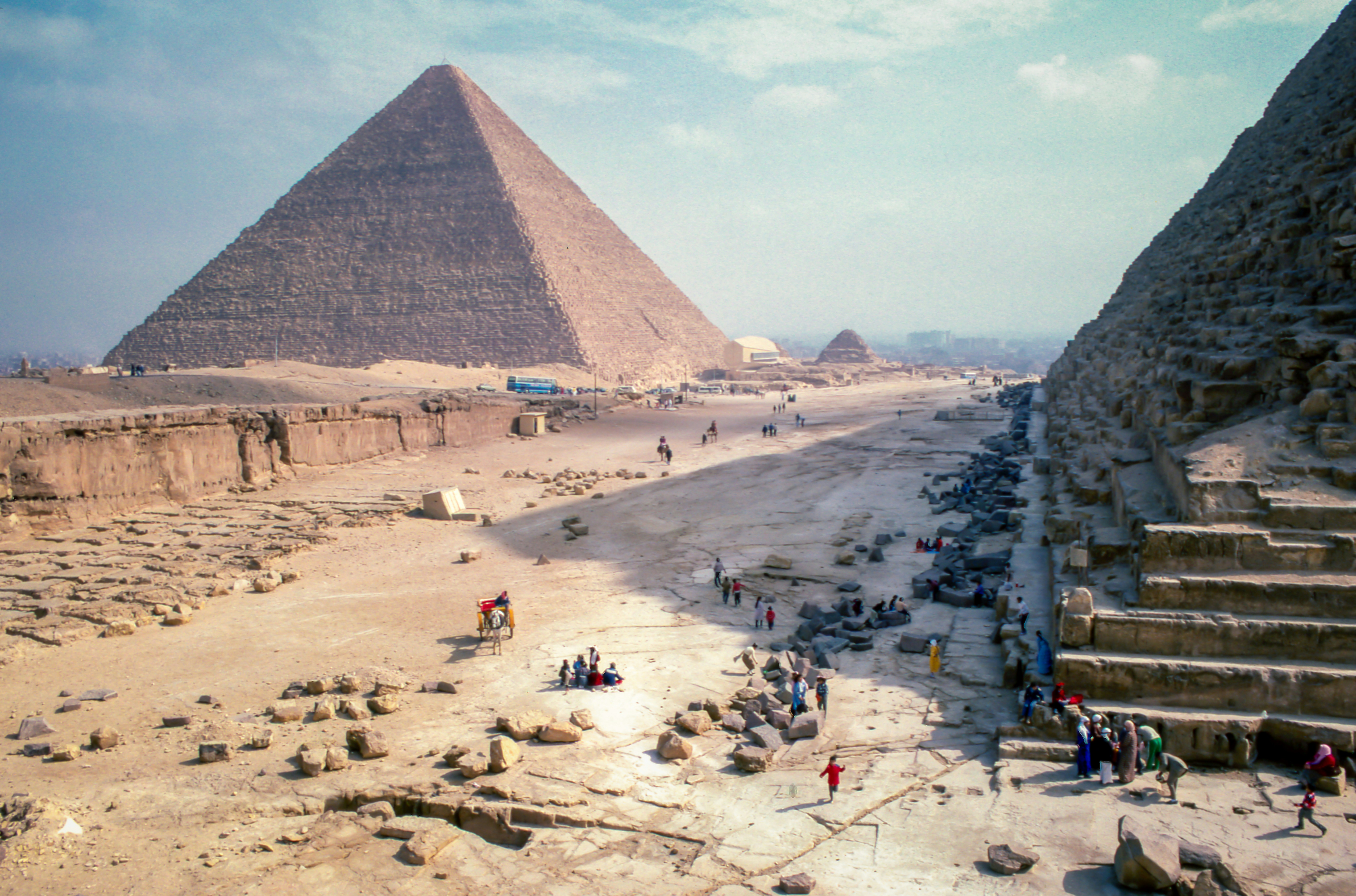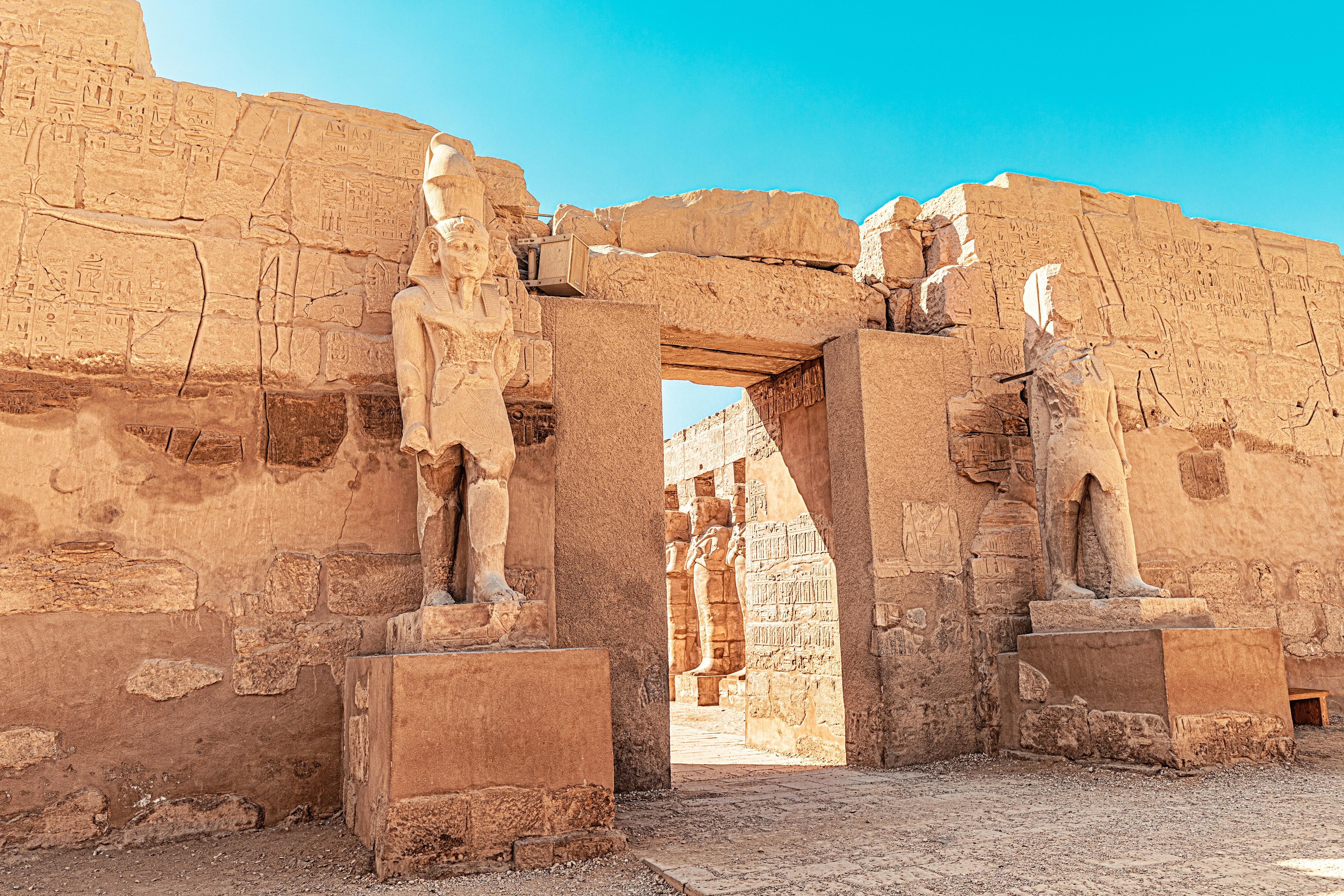Dec 18, 2023
Echoes of the Past: Memory Preservation Traditions in Egyptian Culture
Ever paused to wonder how ancient civilizations managed to keep their stories alive, echoing through the corridors of time? It's like peering through a mysterious veil, isn't it? Well, let's unravel one of history's greatest enigmas together.
Picture this: a civilization so deeply entrenched in the art of memory preservation that it becomes a cornerstone of their existence. Welcome to the realm of Ancient Egypt, where tales of kings, gods, and everyday life were woven into the very fabric of society. Their commitment to preserving memories wasn't just a duty; it was a sacred art form, passed down through generations like a cherished heirloom.
So, what were their secrets? How did they carve their stories into the annals of history with such precision and grace? Join me as we embark on a journey through the sands of time, exploring the echoes of the past and unraveling the mysteries of memory preservation in Ancient Egyptian culture.
Oral Tradition: Passing Down Knowledge
In Ancient Egypt, people didn't have books or computers like we do now. Instead, they relied on storytelling to pass down their history and culture. Imagine sitting around a campfire, listening to someone tell exciting stories about heroes, gods, and important events from long ago. These storytellers were called griots, and they were like the history teachers of Ancient Egypt.
Griots were excellent at remembering stories. They could tell tales about kings, battles, and magical creatures without needing any written notes. They made sure that everyone in the community knew about their past and where they came from.
The stories weren't just for entertainment; they were also a way to keep the community together. By sharing these stories, people felt connected to each other and to their ancestors. It was like a special bond that tied everyone together.
And the best part? Griots didn't just recite the same story over and over. They knew how to make each telling exciting and fun. Sometimes they'd add funny jokes or act out different characters to keep their audience engaged.
So, thanks to these talented storytellers, ancient Egyptians didn't just rely on books or writing to preserve their history.
Hieroglyphics: Written Records of History
Hieroglyphics, the ancient Egyptian form of writing, were like pictures that told stories. They were carved onto walls of temples or written on scrolls made from papyrus, a type of paper. These symbols weren't just simple drawings; they represented different things like people, animals, or even ideas.
Think of hieroglyphics like a secret code that the Egyptians used to record everything important that happened in their society. From the deeds of their pharaohs to their religious ceremonies, hieroglyphics documented it all.
What's cool is that hieroglyphics weren't just about writing things down; they were also about expressing feelings and ideas. Each symbol had its own meaning, and together they formed a language that was both beautiful and complex.
Even though hieroglyphics might seem strange to us now, they were incredibly important to the ancient Egyptians. They allowed them to preserve their history and culture for thousands of years, giving us a fascinating glimpse into their world.

Art and Symbolism: Depicting Memories
Ancient Egyptian art is like a window into the past, filled with colorful paintings and majestic sculptures that tell stories of life thousands of years ago. Each image, from the graceful hieroglyphs to the powerful symbols, holds a special meaning, like a secret waiting to be uncovered. Whether it's the Ankh symbol representing eternal life or the scarab beetle symbolizing protection, every detail has a story to tell.
Beyond just gods and symbols, Egyptian art also gives us a peek into everyday life along the Nile. Imagine seeing paintings of farmers working in the fields, fishermen casting their nets, and families sharing meals together. It's like taking a stroll through Ancient Egypt and witnessing moments frozen in time.
And let's not forget about the pharaohs, the rulers of ancient Egypt. They left behind grand statues and monuments, like the iconic Great Sphinx of Giza, as reminders of their power and legacy. These artworks aren't just decorations—they're snapshots of history, capturing the memories and beliefs of a civilization that continues to fascinate us today.
Mummification: Preserving the Body and Soul
Mummification was a vital part of ancient Egyptian culture, symbolizing their deep belief in the afterlife. They saw preserving the body as crucial for the soul's journey to eternity. The process involved removing organs, drying out the body with a special salt, and wrapping it in cloth with protective charms and spells. This wasn't just for kings and queens; everyone, rich or poor, wanted a shot at immortality through mummification.
For the ancient Egyptians, mummification wasn't just about physical preservation; it was a spiritual journey. They believed that by maintaining the body, they could ensure the soul stayed connected to the living world, receiving offerings and prayers. Moreover, mummification represented rebirth, like the sun rising each day. It was their way of hitting the reset button on life, ensuring a fresh start in the afterlife.
Funerary Practices: Honoring Ancestors
In Ancient Egypt, saying goodbye to loved ones wasn't just about burial; it was a deeply meaningful ceremony steeped in tradition. Elaborate tombs and chambers were crafted to serve as eternal resting places, not just for the body, but as cozy abodes for the spirit in the afterlife. These sites were adorned with treasures and offerings, symbolizing the care and respect for the departed's journey beyond.
Families gathered to bid farewell, sharing memories and stories while priests led ceremonies invoking blessings from the gods. These rituals weren't just about mourning; they were about keeping the memory of the departed alive. By tending to burial places and offering tributes, the living ensured that their loved ones would be honored and remembered for generations to come, reinforcing the enduring bonds of family and love, even beyond death.

Monuments and Architecture: Commemorating the Past
In Ancient Egypt, building wasn't just about construction—it was a way of immortalizing their history and culture. The Egyptians were like super skilled builders, creating huge structures that still amaze us today. Think about those mighty pyramids of Giza or the majestic temples of Karnak—these weren't just big buildings; they were epic monuments, shouting out the stories of pharaohs, gods, and important events from the past. Each one was like a living memory book, keeping the tales of Ancient Egypt alive for people to see in the future.
So, these buildings weren't just about showing off; they were like giant history lessons carved in stone. They helped future generations connect with their past, reminding them of the incredible achievements of their ancestors. It's like these monuments were saying, “Hey, look at what we did! Remember us and what we stood for.” And even today, when we gaze upon these wonders, we can't help but feel the awe and wonder of Ancient Egypt.
Cultural Festivals: Celebrating Heritage
In Ancient Egypt, celebrations were more than just parties—they were vibrant festivals that honored gods, rulers, and the changing seasons. These gatherings weren't just about having fun; they were chances for everyone to come together and remember their shared heritage. Whether they were marching in colorful processions, sharing meals, or taking part in sacred rituals, these festivals were all about strengthening the bonds between people and keeping their culture alive.
Imagine the excitement of everyone coming together, dressed in their finest clothes, to honor their gods and rulers. These festivals were like big family reunions, where everyone felt connected and proud of their heritage. By celebrating together, the ancient Egyptians showed how much they valued their traditions and the sense of belonging they brought to their community.
Legacy and Influence: Impact on Modern Society
The impact of ancient Egyptian memory preservation traditions reaches beyond the boundaries of Egypt, leaving a lasting mark on modern society. Today, we see this influence in various aspects of our lives, from the widespread fascination with mummies to the incorporation of Egyptian symbols and designs in contemporary art and fashion. Whether it's the allure of ancient mysteries or the timeless elegance of Egyptian aesthetics, the echoes of Egypt's past resonate strongly in our present-day culture.
Scholars delve into Egypt's rich history, uncovering insights that continue to shape our understanding of the world. Artists draw inspiration from the intricate hieroglyphics and majestic monuments of Ancient Egypt, infusing their work with a sense of wonder and reverence. Meanwhile, enthusiasts immerse themselves in the mysteries of the pyramids and the tales of pharaohs, keeping the spirit of Ancient Egypt alive in the collective imagination. As we continue to explore and celebrate Egypt's legacy, we honor the enduring contributions of one of the world's greatest civilizations.
Challenges and Preservation Efforts: Safeguarding the Past
Ancient Egyptian sites face big problems from things like pollution and changes in the environment.
Growing cities are getting closer to these sites, causing damage to important things buried underground.
Sometimes, the situation in Egypt and nearby places isn't stable, which can lead to things being stolen or broken.
Not having enough money and help makes it hard to take care of these places, do research, and keep them safe.
Many people don't know or care about these ancient sites, which can lead to them being forgotten or ignored.
Some people want to buy ancient things, which encourages others to steal and sell them illegally.
Natural disasters like earthquakes and floods can also hurt these old sites, causing even more damage.

Educational Significance: Learning from the Past
Learning from the Past:
Studying how ancient Egyptians preserved their memories teaches us important lessons for today. We see how they valued keeping their history alive and passing it on to future generations. This helps us understand why remembering our past is essential for our communities and our culture.
Keeping Culture Alive:
Ancient Egypt shows us how holding onto traditions keeps a culture strong over time. By seeing how they preserved their beliefs and practices, we can appreciate why it's essential to keep our own cultural heritage alive today. This reminds us of the value of our traditions and customs.
The Power of Stories:
Ancient Egyptians relied on storytelling to pass down their history. This teaches us how powerful storytelling can be in preserving our culture. We learn that sharing stories is a vital way to keep our heritage alive and connect with others.
Protecting Global Heritage:
Understanding how ancient Egyptians protected their heritage inspires us to do the same for cultures worldwide. By learning from their methods, we can work to safeguard diverse cultural traditions for future generations. This ensures that everyone can enjoy and learn from the rich history of humanity.
Conclusion
In the sands of Egypt, echoes of the past resonate with timeless wisdom and enduring legacy. Through oral traditions, hieroglyphics, art, and ritual, the ancient Egyptians forged a bond with posterity, ensuring that their memory would endure for eternity. As we marvel at the wonders of their civilization, let us remember the importance of preserving our own stories and traditions, for them lie the keys to our shared humanity.
